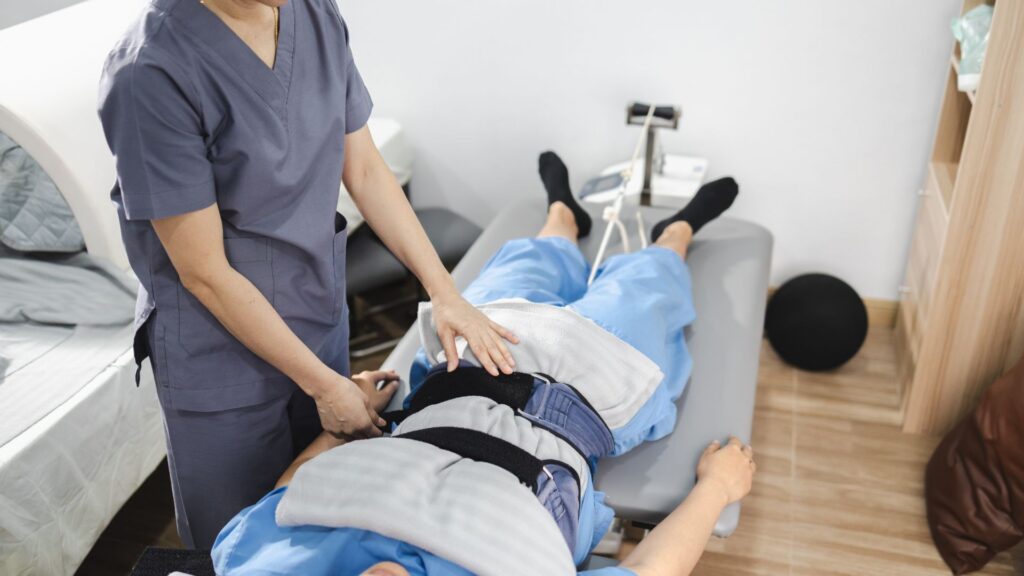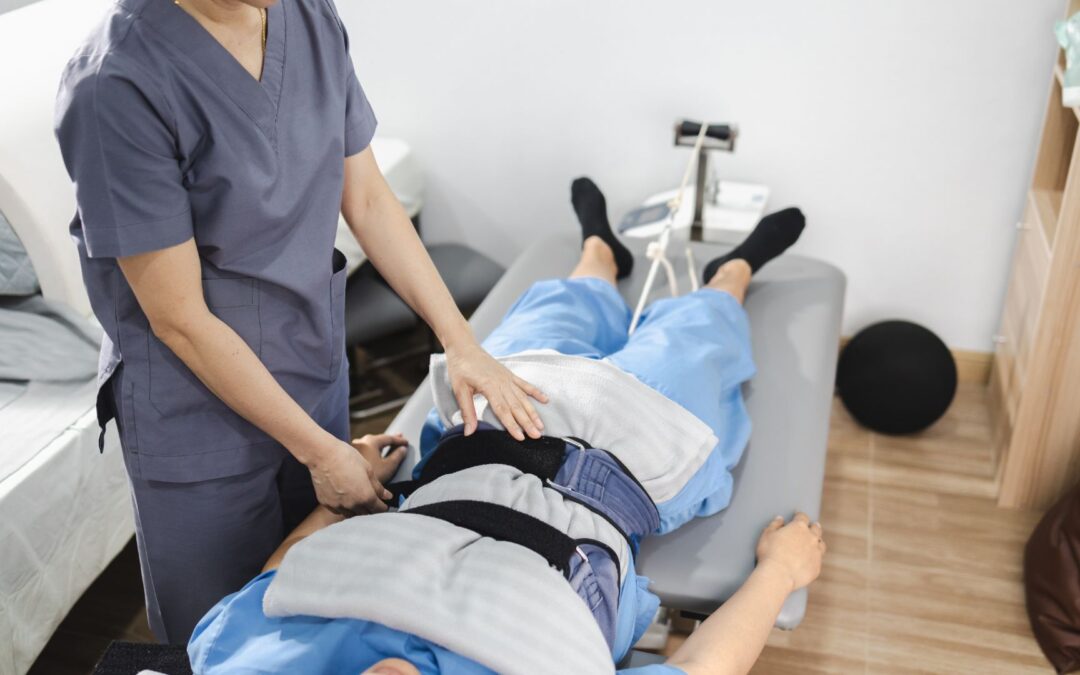
If you’re new to chiropractic care, start by visiting our guide on My First Visit. It explains step by step how chiropractic care works and what to expect at your first appointment.
Spinal decompression therapy, sometimes referred to as traction therapy, is a non-invasive treatment that uses controlled mechanical force to stretch the spine, relieve pressure, and promote healing. For many people suffering from chronic back pain, herniated discs, or sciatica, decompression therapy offers a safe and effective alternative to medication or surgery.
The Anatomy Behind Decompression Therapy
To understand decompression therapy, it’s essential to review spinal anatomy:
- Vertebrae: The bones forming the spine, stacked to protect the spinal cord.
- Intervertebral discs: Cushion-like structures between vertebrae that act as shock absorbers.
- Nerves: The spinal cord branches into nerves that travel through small openings in the spine, sending signals throughout the body.
When discs are compressed, injured, or herniated, they can press against nerves, leading to pain, tingling, numbness, or weakness. Decompression therapy helps restore space within the spine, reducing this pressure and allowing natural healing to occur.
Common Causes of Spinal Compression
Several conditions can create spinal pressure that decompression therapy addresses:
- Herniated or bulging discs – When the inner gel-like material of a disc protrudes outward.
- Degenerative disc disease – Natural wear and tear that decreases disc height.
- Sciatica – Nerve irritation in the lower back that radiates down the leg.
- Postural strain – Poor ergonomics or repetitive movements that overload the spine.
- Chronic low back pain – Often caused by a mix of structural and lifestyle factors.
How Decompression Therapy Works
Decompression therapy involves lying on a specialized traction table while a computerized system gently pulls and releases the spine in cycles.
The goals are to:
- Create negative intradiscal pressure, drawing bulging disc material inward.
- Enhance the flow of oxygen, water, and nutrients into damaged discs.
- Reduce nerve root compression, alleviating radiating pain.
- Improve spinal flexibility and alignment.
Unlike manual traction, decompression therapy is highly controlled, allowing precise targeting of specific spinal segments and reducing the risk of strain.
Benefits of Spinal Decompression
Patients often notice improvements after a series of sessions. Documented benefits include:
- Pain relief from herniated discs and pinched nerves
- Reduced inflammation around spinal structures
- Improved range of motion in the back and neck
- Enhanced healing of intervertebral discs
- Non-surgical alternative to invasive treatments
Because decompression is gentle and non-invasive, most patients find the process relaxing rather than painful.
Clinical Applications: When Traction Makes Sense
Decompression therapy is recommended when conservative measures such as stretching, posture correction, and basic chiropractic adjustments alone do not fully resolve symptoms.
It is especially helpful in:
- Herniated discs with radiating pain
- Chronic sciatica resistant to exercise and medication
- Degenerative conditions causing stiffness and pressure
- Spinal nerve compression with numbness or tingling
However, not all patients are candidates. Individuals with osteoporosis, fractures, metal implants, spinal tumors, or advanced instability should avoid traction. A chiropractor’s evaluation ensures the right approach.
Integration With Chiropractic Care
Decompression therapy is most effective when combined with comprehensive chiropractic treatment, including:
- Spinal adjustments to restore natural alignment
- Posture training to prevent future compression
- Therapeutic exercises to strengthen supporting muscles
- Lifestyle guidance for ergonomics, stress management, and activity modification
This integrative model not only reduces pain but also promotes long-term spinal resilience.
What to Expect During a Session
- Initial evaluation: Your chiropractor reviews your medical history and imaging.
- Setup and positioning: You are secured comfortably on the decompression table.
- Treatment cycles: Gentle pulling and releasing lasts 20–45 minutes.
- Aftercare: You may be given stretches or core-strengthening exercises to support results.
Most patients undergo multiple sessions over several weeks, as healing takes time and consistency.

Conclusion: Is Decompression Right for You?
Decompression therapy provides a safe, effective, and non-surgical option for those suffering from disc injuries, chronic back pain, or nerve-related symptoms. When integrated with chiropractic care, it supports not only short-term relief but also long-term spinal health.
If you’re ready to learn whether spinal decompression is the right solution for you, reach out through our Contact or Visit page. At Family Chiropractic of Clark, we are dedicated to providing personalized care that helps you move, live, and feel better.
